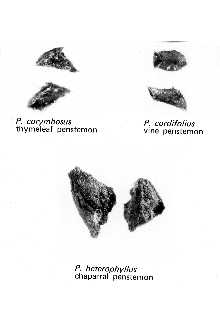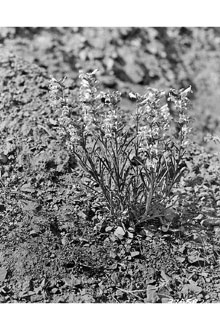Beardtongue
Scientific Name: Penstemon Schmidel

| General Information | |
|---|---|
| Usda Symbol | PENST |
| Group | Dicot |
| Life Cycle | Perennial |
| Growth Habits | Forb/herbShrub, Subshrub, |
| Native Locations | PENST |
Plant Guide
Use soil moisture sensors to measure the soil moisture of Beardtongue.
Fact Sheet
Alternate Names
beardtongue
Uses
Grazing/rangeland: 'Cedar' and 'Bandera' are the only released penstemons noted to have any forage value. 'Cedar' leaves stay green throughout the growing season providing some forage value. All other varieties are considered fair to poor palatability and considered to be only incidental forage value. All species provide diversity to the seeded plant community. Erosion control/reclamation: All species are mentioned for their value in mixes for erosion control and beautification values. Wildlife: Penstemons are considered desirable forages for deer, antelope and birds either as herbage or seed. They may also provide some cover for selected small bird species. They provide diversity to the plant community.
Status
Please consult the PLANTS Web site and your State Department of Natural Resources for this plant’s current status (e.g. threatened or endangered species, state noxious status, and wetland indicator values).
Description
Penstemons (Penstemon spp.) are perennial forbs, subshrubs to shrubs with attractive flowers. Common to the western United States. Except for one minor species, the genus Penstemon does not occur naturally outside of North America. They are short to long-lived. Penstemons have opposite, entire or toothed leaves. They have several stalked flowers or flower clusters that are borne in the axils of the upper leaves or leaflike bracts. The tubular flower is strongly to distinctly two-lipped at the mouth with a two-lobed upper lip and a three-lobbed lower lip. There are 4 fertile stamens and a single sterile stamen that is often hairy at the tip. The fruit is a many-seeded capsule.
Adaptation and Distribution
Distribution , Use soil moisture sensors to measure the soil moisture of Beardtongue.
Distribution
Penstemons do best on well-drained soils. Most ecotypes do well on infertile, disturbed soils. They have excellent cold winter and drought tolerance. They will tolerate weakly saline to weakly acidic sites. They are usually found in open areas, but will tolerate semi-shaded conditions. They are somewhat fire-resistant due to leaves staying green with relatively high moisture content during the fire season. Dr. G Dallas and Margaret Hanna ©California Academy of Sciences @CalFlora Penstemon is distributed throughout the entire United States. For a current distribution map, please consult the Plant Profile page for this species on the PLANTS Website.
Establishment
These species should be seeded with a drill or broadcast at a depth of 1/4 inch or less into a firm seedbed. Ideal seeding depth is 1/8 inch. Penstemons are not recommended for single species seeding. The full seeding rate (not recommended) for these forbs-shrubs is 1.5 to 3 pounds Pure Live Seed (PLS) per acre or 20 to 26 PLS per square foot (varies somewhat by species). When used as a component of a mix, adjust to percent of mix desired. For mined lands and other harsh critical areas, doubling the seeding rate component of penstemon is not required. The best seeding results are obtained from seeding in very early spring (because of grass component of mix) on heavy to medium textured soils and in late fall on medium to light textured soils. Late summer (August - mid September) seeding is not recommended. Dormant fall seedings (preferred seeding period for penstemons) will pre-chill seed and reduce seed dormancy which is very strong in some species. Mulching, irrigation and weed control all benefit stand establishment. Seedling vigor is good, but not as good as most grasses. Germination may not occur until the second growing season. Flowering should not be expected until at least the second growing season.
Management
Growth of penstemons begins in early spring and flowers appear in May through July depending on species. Weed control and removal of very competitive species may improve chance of establishment. Damage from wildlife and rodents may occur and they may need to be controlled. Disease problems are minimal except under irrigation. Under irrigation, fusarium wilt can be a problem.
Pests and Potential Problems
Stands may require weed control measures during establishment. Because penstemons are broad-leaved, use of 2,4-D is not recommended. Mow weeds at or prior to their bloom stage. New stands may also be damaged by grasshoppers and other insects and pesticides may be needed.

